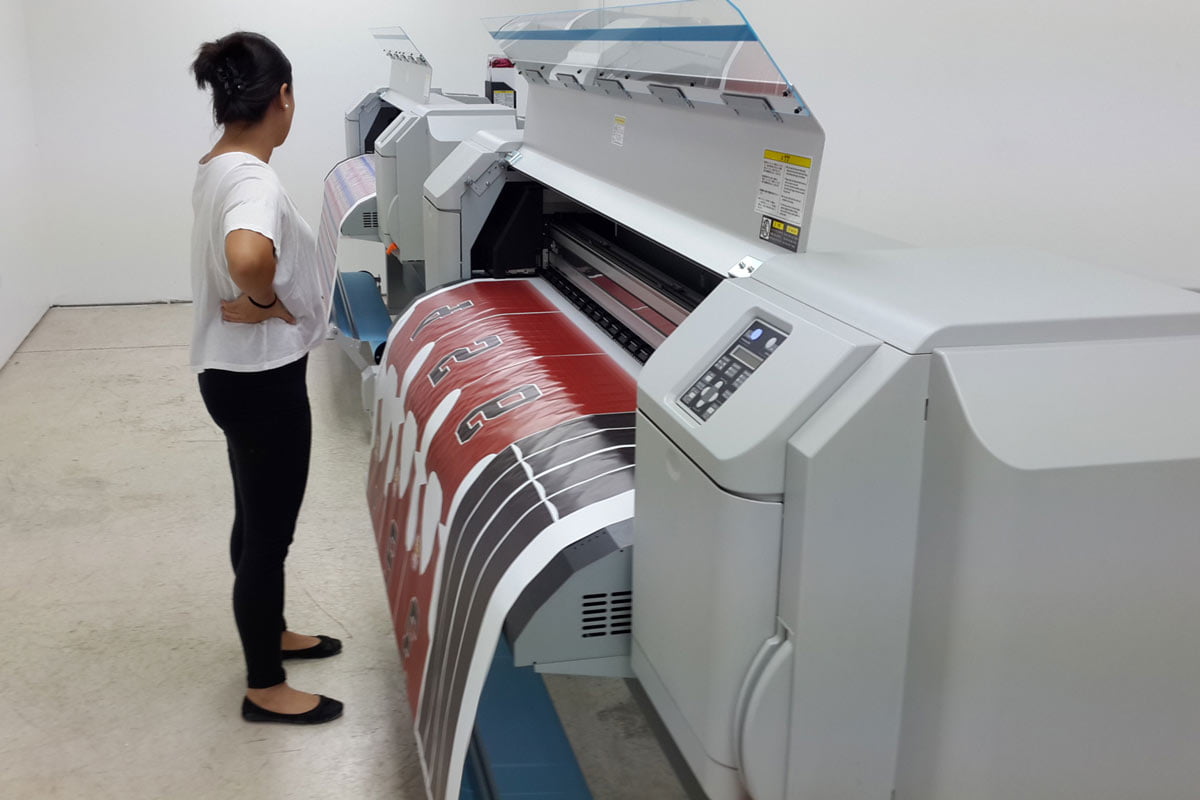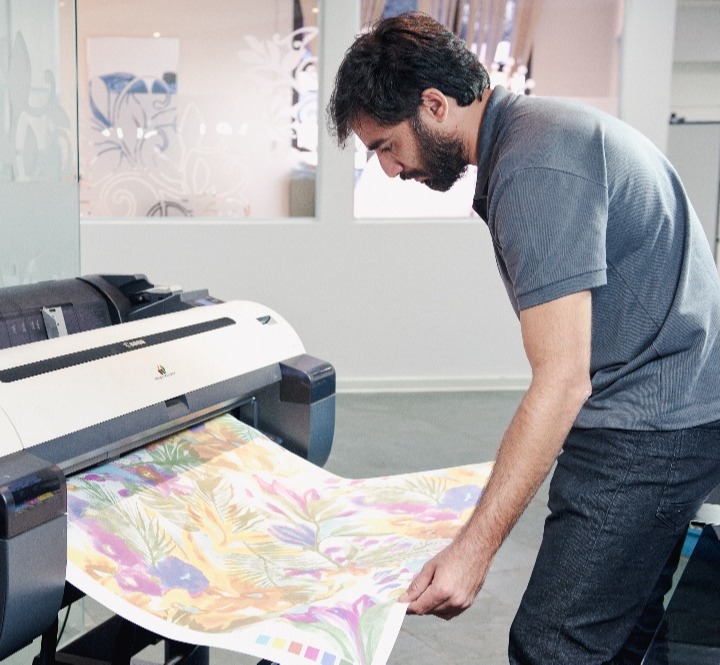The Ultimate Guide to Sublimation Printing for Custom-made Garments
The Ultimate Guide to Sublimation Printing for Custom-made Garments
Blog Article
From Standard to Digital: Comprehending the Advancement of Fabric Printing
The improvement of cloth printing from typical techniques like block printing and withstand dyeing to contemporary techniques such as screen and digital printing marks a substantial shift in the textile sector. Typical methods, steeped in artisanal craftsmanship and social importance, have actually progressively paved the way to digital technologies that supply extraordinary accuracy, effectiveness, and customization. This shift not just boosts production abilities but likewise lines up with growing demands for lasting techniques. Just how do these advancements impact the essence of cloth printing, and what might the future hold for this ever-evolving craft?
Traditional Fabric Printing Approaches
In the very early phases of fabric manufacturing, standard fabric printing approaches served as the foundation of textile layout, using both functionality and imaginative expression. Block printing, one of the oldest approaches, entailed sculpting intricate designs into wood blocks, which were then dipped in color and pushed onto fabric.
Withstand dyeing, consisting of strategies like batik and tie-dye, employed wax or other compounds to prevent color from penetrating particular locations of the material. This technique created striking contrasts and intricate layouts, usually imbued with cultural importance. Stenciling, another typical method, involved cutting patterns right into a material and applying dye through the openings, supplying an easier yet effective method to generate repeated styles.
These traditional methods not only shaped the textile industry's early development yet also prepared for future advancements. Each method mirrored the social and regional features of its origin, preserving and disseminating artisanal understanding via generations.
The Increase of Display Printing
The introduction of display printing in the very early 20th century marked a considerable separation from conventional methods, providing unmatched adaptability and efficiency. Display printing allowed developers to generate intricate patterns and dynamic colors on materials, which were formerly testing to accomplish with block printing or hand-painting methods.
One of the vital benefits of display printing is its capability to replicate intricate designs widespread with exceptional fidelity. This scalability made it immensely popular in the commercial fabric industry, where mass manufacturing without compromising quality is vital. Moreover, screen printing suits a wide variety of dyes and inks, expanding the palette of appearances and coatings available to designers.
Furthermore, the procedure is very adaptable, ideal for various material types consisting of cotton, silk, and synthetics. This adaptability, incorporated with its cost-efficiency for huge runs, solidified display printing's duty as a foundation of modern textile manufacturing. Therefore, the surge of display printing transformed the industry, pressing the limits of what was possible in fabric design.

The Introduction of Digital Printing
Building on the impressive advancements brought by screen printing, the textile market experienced an additional groundbreaking growth with the arrival of digital printing. Arising in the late 20th century, electronic printing changed the means designs are moved onto materials, providing unprecedented versatility and effectiveness. Unlike traditional methods, which often called for extensive setup and considerable hand-operated intervention, digital printing utilizes computer-aided layout (CAD) innovation to create complex patterns straight onto the fabric with high accuracy.
This advancement has made it possible for fabric suppliers to satisfy the expanding need for customization and on-demand production. By removing the need for screens and plates, electronic printing reduces and lowers lead times product waste, making it an extra lasting choice. The ability to publish complicated pictures and a wide variety of shades in a single pass has actually opened new imaginative methods for designers, fostering a rise in creative expression within the sector.
Moreover, electronic printing supports smaller batch production runs, which is especially useful for niche markets and start-up style brands. This technical leap i thought about this has not just enhanced operational effectiveness yet likewise equalized access to top quality fabric printing, establishing the phase for future advancements in fabric layout and production.
Comparing Methods: Traditional Vs. Digital
While both electronic and typical printing methods have their own distinct benefits, they vary substantially in terms of process, efficiency, and ecological impact. Traditional cloth printing, incorporating strategies like block printing and display printing, includes hands-on labor and elaborate craftsmanship.
In contrast, digital printing employs sophisticated technology to transfer layouts straight onto material making use of inkjet printers. Digital printing is significantly much faster, permitting for quick turnarounds and just-in-time manufacturing, which minimizes the need for large stock storage.
From an environmental point of view, electronic printing is generally a lot more lasting. It uses less water and creates minimal waste contrasted to conventional techniques, which typically include considerable cleaning and dyeing procedures. Consequently, digital printing is significantly favored in a period where environmental factors to consider are extremely important.
Future Patterns in Fabric Printing
As the textile industry continues to evolve, future patterns in cloth printing frequently direct towards better integration of technology and sustainability. One considerable pattern is the raised application of digital printing modern technologies. These innovations allow for greater precision, much faster manufacturing times, and the ability to develop complicated designs that were as soon as challenging with typical methods. Digital fabric printing is expected to dominate the market, driven by its effectiveness and versatility to customer demands for individualized and limited-edition items.

In addition, the consolidation of smart fabrics, which integrate electronic components into materials, is set to transform the marketplace. These fabrics can provide additional capabilities such as temperature policy, wellness tracking, and interactive attributes. As innovation continues to advance, the crossway of electronic printing and clever fabrics will certainly open up brand-new avenues for useful and imaginative applications in towel printing.
Final Thought
The evolution of towel printing from conventional approaches to digital technologies marks a significant improvement in the textile market. While conventional techniques highlight artisanal workmanship and social heritage, electronic printing uses unrivaled Learn More precision, performance, and modification.
The improvement of fabric printing from traditional methods like block printing and withstand dyeing to modern methods such as display and digital printing notes a considerable change in the textile market. Screen printing enabled developers to generate detailed patterns and navigate to this site dynamic colors on materials, which were formerly testing to accomplish with block printing or hand-painting techniques.
Building on the amazing innovations brought by screen printing, the textile industry experienced another groundbreaking growth with the development of digital printing. Branded clothing. Traditional cloth printing, including techniques like block printing and display printing, includes hand-operated labor and detailed craftsmanship. As modern technology continues to breakthrough, the crossway of electronic printing and smart fabrics will open brand-new avenues for creative and practical applications in towel printing
Report this page